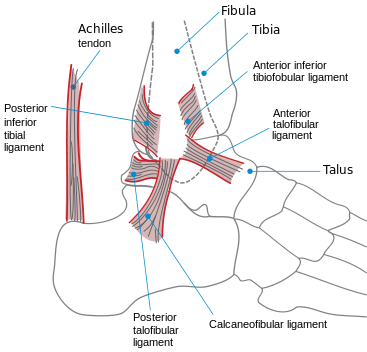Shopping basket
Subtotal: £0.00 Basket / Checkout
- Ally Gavigan:
- 02 April 2014
Foot & Ankle Strain
Causes & Remedies

One of the commonest traumas for dancers is the strain around the foot and lower leg. They will happen around the arch, ankle and the great toe areas. Because the dancer creates springing movement in both leaps and forward action, it is the great toe that usually suffers from strain.
Many years ago I was doing a study at the Royal Ballet School to create a Pointe and soft shoe for students when I became aware that some strain was the result of faulty alignment on the landing. The issue was that the dancer was wearing a soft ballet shoe that had stretched too much and twisted slightly around the foot. This had the effect of making the dancer feel that their landing point, based on the fit of the shoe and their technique, was in the correct position and caused the dancer to land slightly off centre.
Now in addition to that explanation there is clearly another issue when it is simply faulty technique and your teacher will soon notice this and correct it. In this case the shoe was at fault, or rather the fit of the shoe was not correct.
What we, as shoe makers, must be well aware of is the responsibility of making sure that the shoes we make do the job that the dancer expects. The shoes are tools and affect the most important part of the body, your feet. Over and above the outfit and any other part of the dancer’s accoutrement, the shoes are the most important element in dance.
In Celtic dance the areas that can affect strain will come from twisting, faulty landing after a jump or leap. If we combine this with lack of strengthening exercises, practice or recovery from another injury, we would see that the foot could be at risk through stiffness or lack of ‘fluidity’
However we need to look at other issues in strain and that could be the misalignment of the foot concerning the dancer with extremely high or low longitudinal arches. This misalignment can affect the entire foot which could lead to strain from forced actions such as turnout, pointing the toes-and over pointing the toes, from dancers that move a limb or part of a limb away from the midline of the body . What we would call abduction. This could result in some foot imbalance.
I have discussed plantar fascia strain in previous articles and will come back to that at some point but plantar fascia issues also come from jumping and landing movements. One thing should be mentioned though and it is that once plantar fasciitis sets in this could become a chronic problem.
Treatment can consist of strapping the longitudinal arch, a number of daily hydro massage therapy sessions, and stretching exercises for the arch and Achilles tendon. In any case stretching for the foot should be an integral part of your daily routine.
Achilles tendon strain is another issue that affects dancers and is caused by a overstretching of the Achilles tendon which can also be caused by jumping and pushing off the floor. There are o0ncerns for dancers who have particular narrow tendons (less than ¾ inch-1.90cm) as they are most at risk.
In all cases, and as part of your training, you should learn how to do basic immediate care before getting to a hospital or doctor. Keeping the injury as cold as possible (use chemical *freeze bags for athletes) , basic strapping top support the foot would also be useful. Your doctor or physio should be able to show you how to do this.
Following on from the foot is Hamstring strain. As a dancer your hamstring is stretched and having a good stretching and strengthening exercise regime could help prevent such strains. Hamstring strain can also be caused by lack of strength in the quadriceps which is in front of your thighs. This can led to spasm, tiredness and then a strain.
The conclusion is that regular exercise of the foot, ankle, tendons, hamstrings and upper thighs should be a daily part of your training and ongoing development as a dancer. It is as important as dance technique because without a good exercise regime you will be at risk of strains and sprains.
If you would like me to follow up with suitable exercises please let us know.
Craig Coussins
• *Instant Cold Packs/Freeze Packs etc.: You simply squeeze the water pouch inside the pack and shake it to mix the content of the pack. It will offer an instant cold which is needed immediately after an injury. Also for ongoing treatment if the pain is not too serious ‘always get medical advice’ BioFreeze Gel is an long lasting analgesic Pain Relief Gel with Ilex ( up to 6 hours ) This uses cold therapy to give fast muscle and joint topical pain relief. However, the maximum benefit will be felt after 2 - 3 applications. It uses no waxes, oils or petroleum, 100% paraben-free and non-greasy.
Sign in to add this to your favourites
Blogs
Read the latest Antonio Pacelli news here! Antonio Pacelli Blog
Antonio Pacelli Blog
Tips and advise for new Irish dancers. Beginners Guide to Irish Dancing
Beginners Guide to Irish Dancing
Archive posts from previous community bloggers. Blogger Archive
Blogger Archive
Read the latest from our in-house foot expert! Craig Coussins Blog
Craig Coussins Blog
A dad's view of feis life! Feis Dad -WTF! (What The Feis)
Feis Dad -WTF! (What The Feis)
Catch up on the Shelly Allen archive and be inspired! The Shelly Allen Archive
The Shelly Allen Archive


